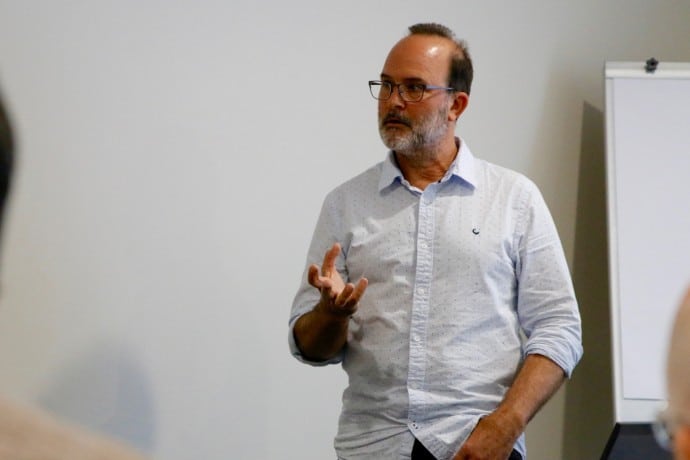“I am interested in the persistence of attempts to understand the unity of humanity alongside manifestations of human diversity.”

Prof. John Noyes of the Department of Germanic Languages and Literatures of the University of Toronto was talking about his STIAS Project – Global Citizenship and the practice of being human. South African visions and the legacy of Enlightenment at a STIAS fellows seminar. The project addresses the idea of global citizenship and common humanity in South Africa today.
“These ideas were powerful in Enlightenment Europe,” said Noyes. “They promised a new regime of justice in opposition to despotism, exploitation and slavery. But they were also problematic, since they tended to obscure cultural difference and impose European values on other cultures, often by force.”
“This dynamic persists in South Africa today,” continued Noyes, “not only because of the role ideas of the human played during apartheid and in the two decades of democracy, but because of the way citizenship in the global economy works against cultural difference.”
Describing himself as “a historian of ideas” Noyes said: “I dredge the past for ideas that have relevance today.”
“Many ideas of the past can be discarded but many cannot and should not be. We owe it to the past to ask if we have realised the dreams of our ancestors and, if not, why not.”
“We have been hopeless at fulfilling the Enlightenment dream of a just and equitable society,” he added. “I’m interested in understanding what that failure means.”
Some of the reasons Noyes gave for this failure include the secularisation of truth; rapid, un-co-ordinated scientific and technological change which political systems have not been able to keep up with; and, the mistaken belief that markets would level human existence in a positive way.
“We have succeeded in realising many technological dreams but have been less successful in other areas,” he added.
“The aim of my study is to explore how contradictions in the idea of global citizenship persist in South Africa, and to ask what the project of common humanity in the global economy can learn from South African scholarship and literature.”
“The problem of humanity has been particularly important in colonial liberation struggles and in post-independence Africa,” continued Noyes. He pointed to the resurgence of interest in the African humanists including Fanon, Sobukwe and Biko.
“This has to do with the realisation that a just society requires a vision of unified humanity, but the persistence of race-based inequality does not support this vision. This is a continuation of the Enlightenment problem of conceptualising unity and diversity. What the African humanists appear to offer is a way toward de-racialised humanist ideals without denying that social injustice has been built upon a fiction of race.”
“Humanity without race is at odds with the fact that race has structured human relations,” he said.
“Even though democratic rule has been achieved in South Africa, the problem of inequality has not gone away. Inequality in living conditions is very real.”
“There is no justice without humanity, no justice without restitution, no restitution without recognition of race-based injustice.”
“Humanity lacks a unified vision of what unified humanity is.”
“I’m interested in the methodological challenges this raises. If we take these challenges seriously, they impact on the way we view the humanities in a world structured by rapid technological change and globalisation.”
“I’m basically asking myself: ‘Could there be a method to find what shared humanity might look like?’,” he said.
One of the areas which Noyes is considering is the role of Art and, in particular, Theatre.
“The question of what is human used to be relegated to Departments of Philosophy and Theology. That time has gone,” said Noyes. “Philosophy was the discipline that promised an answer to the question of what is shared humanity but has failed to deliver and has been partially eclipsed by science and technology.”
“Philosophy turns to Art when it can’t get further,” he continued. “It approaches Art with its failed concepts and language, and Art responds with images of what is human and what is not human. These images beg for conceptualisation and analysis, so they refer back to Philosophy to provide this.”
“Any Art worth talking about as Art challenges us to bring concepts and language back to the images.”
“The problem of speaking about humanity shows that there is an ethical demand from the catastrophic situation we are currently in.” he concluded. “We should be requesting help from all disciplines.”
Michelle Galloway: Part-time media officer at STIAS
Photograph: Christoff Pauw
